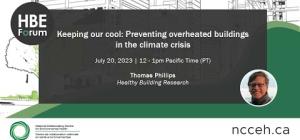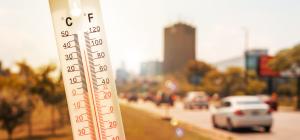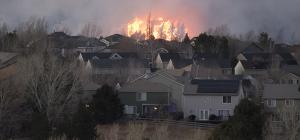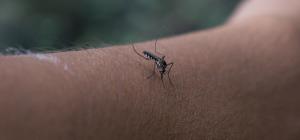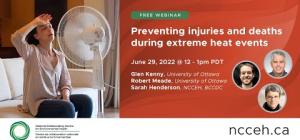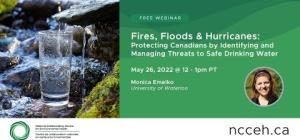
Health checks during extreme heat events

Extreme heat events affect different people in different ways, and some people are at higher risk of experiencing heat-related illness if they do not have air conditioning. One way to reduce the public health impacts of extreme heat events is to check in regularly with susceptible people to see how they are coping. However, not everyone knows who is at most risk, how to recognize heat-related illness, or what to do in risky situations. This tool from the NCCEH was designed to help support people doing heat checks by providing all they key information and guidance in a 5-page package. This tool has been co-developed with Dr. Glen Kenny and his heat stress research group at the University of Ottawa.
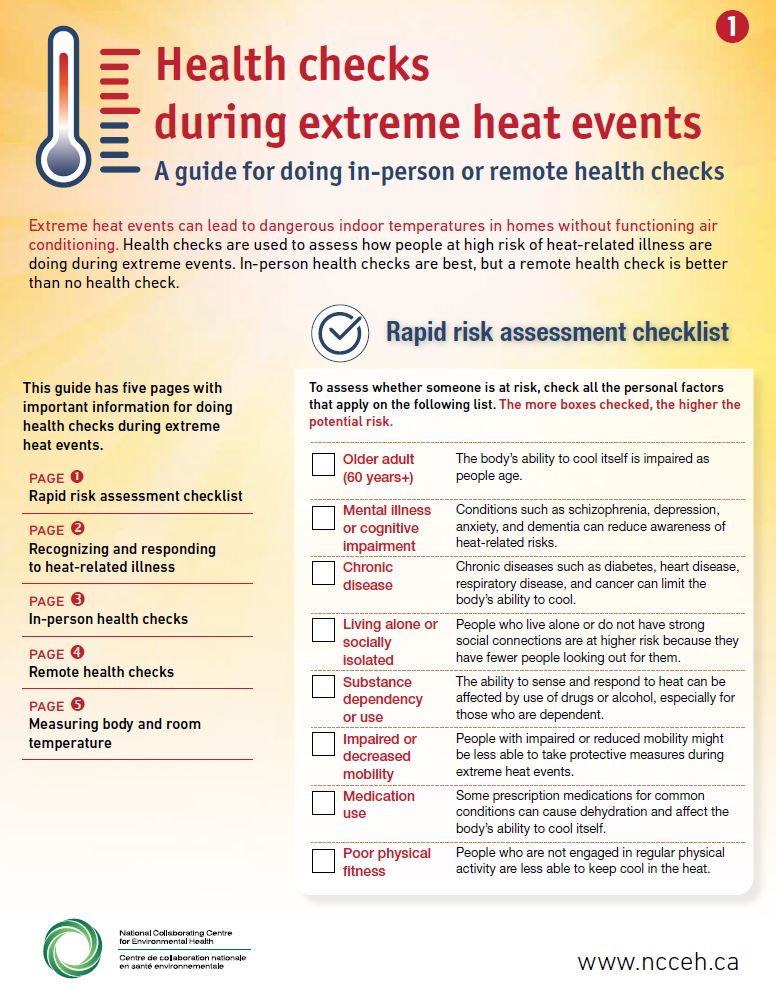
Download the brochure in multiple languages
English
Download colour version (PDF) | Download B&W version (PDF)
French
Download colour version (PDF) | Download B&W version (PDF)
Chinese (Traditional)
Download colour version (PDF) | Download B&W version (PDF)
Chinese (Simplified)
Download colour version (PDF) | Download B&W version (PDF)
Punjabi
Download colour version (PDF) | Download B&W version (PDF)
Permission is granted to use this guide without alteration for non-commercial purposes. Usage includes but not be limited to downloading, printing, posting on websites or hardcopy, distributing electronically or in hardcopy. Request to adapt (i.e., modify) this guide must be submitted in writing to [email protected].
This tool was developed in collaboration with Dr. Glen Kenny, PhD (Physiology), University of Ottawa; MSc (Exercise Physiology), University of Ottawa; BSc (Kinanthropology), University of Ottawa
Dr. Glen P. Kenny, Professor, University of Ottawa, Director, Human and Environmental Physiology Research Unit (HEPRU), Research Chair in Heat Strain Monitoring and Management. Dr. Kenny’s research aims to assess and understand the environmental and human factors affecting a person’s ability to live and work in the heat. Utilizing the world’s only direct air calorimeter, Dr. Kenny and his team are able to measure the physiological consequences of heat stress responses in varying conditions and with different population groups, results of which have created new and advanced knowledge, policies, standards and guidelines for physical activity and work in hot environments.

